Boeing B-17G Flying Fortress, 42-97747, Mid Atlantic, May 1944
The 16th of May 1944 seen one of the stranger incidents included in the list of foreign aircraft crashes in or around Ireland. In reality it didn't happen 'near' Ireland and the crew members never set foot on Irish soil but they were plucked from the wide Atlantic by an Irish ship!
The pilot of Boeing B-17G serial number 42-97747, the wonderfully named Clarence W Fightmaster, was in command of the aircraft on a transatlantic ferry mission, delivering the new bomber to the Eighth Air Force in England for the ongoing bomber offensive against Germany. The crash report in the US Air Force archives includes his report filed in the aftermath of the incident and tells the story in simple terms:
"Last radio contact with any station
was made with Goose Bay at the time flight altitude of
11,000 ft. was reached. We proceeded on course as briefed to
the navigator.
No other radio contact was made. Our liaison
transmitter was not working properly, apparently due to a
broken trailing wire antenna. Many attempts were made for
[text unreadable] and other radio aids.
We flew out our ETA plus forty min., and at no time
could we pick up the Meeks radio, or any other radio. The
navigator made several shots, but they showed to be roughly
several hundred miles off DR course, so we followed
Navigators briefing and remained on DR.
Due to the overcast and following flight plan the
Navigator assumed a DR position and altered course for
Stornaway. No indication was ever found of destination so at
the end of new ETA plus thirty min. course was altered to
the east in approximate direction of land. A London civilian
radio station was also [text unreadable] up
on the compass that roughly indicated that direction.
With about thirty min. of fuel remaining and no
indication of land a ditching was made beside a tramp
steamer approximately 160 miles south west of the Irish
coast. Dingy procedure was followed and all of the crew were
rescued. The ship remained afloat for thirty min."
In the above account, the following terms are:
ETA - Estimated Time of Arrival
DR - Dead reckoning
The Army Air Forces report includes the following summary of
the event:
"On May 16 1944 at approximately 1200
GMT, B-17G 42-97747 ditched at 49" 46'N 13" 01'W.
This ship was cleared from Goose Bay,
Lab. destined from Meeks Field, Iceland, Pilot Fightmaster,
Clarence, 2nd Lt , AC, O-1291613.
According to the pilot and crew no
radio contact was made from the time they took off or left
Goose Bay the navigator was depending entirely on DR, and
not celestial. He took several shots which put him
several hundred miles south of course, but according to the
navigator remained on DR, according to briefing.
The ship finally ditched appr. 1000
mi. S.E. of destination due to lack of fuel. The ship
was ditched beside a tramp steamer which picked up the crew.
Recommend that Briefing Officers
stress a point that celestial navigation should be depended
on when shots are taken rather than DR. In addition it
is also recommended that navigators before making an
overseas flight should have navigation equipment
checked. This particular navigator did not have his
sextant checked in the last six months."
Gustav Ranzinger the navigator had his own report on the
ditching in the files he left his family.
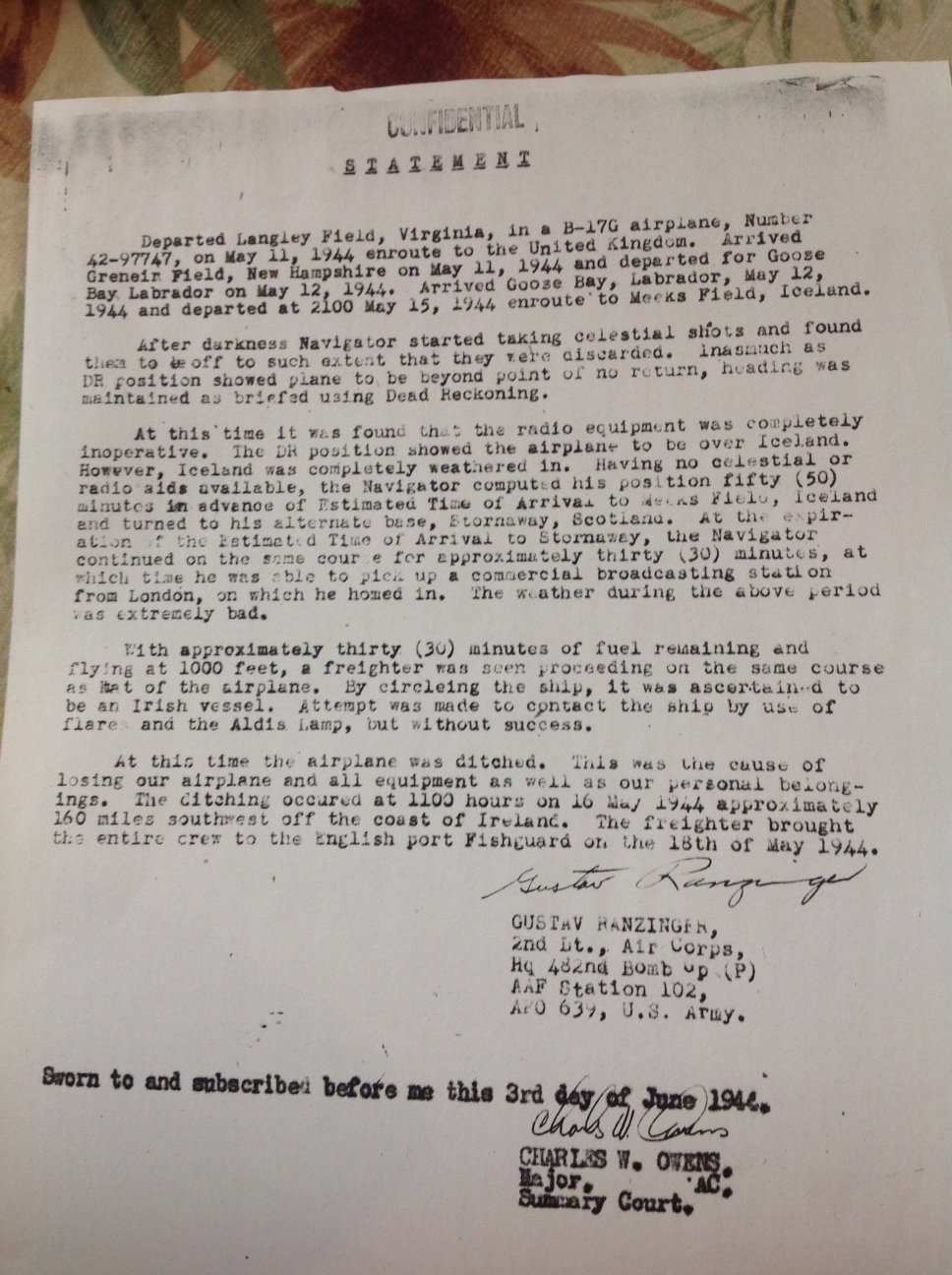
The ship they landed beside was the Irish registered SS
Lanahrone under the Command of Captain Timothy Hanrahan. Frank
Forde, in his book, The Long Watch, explains that she was on a
its return voyage from Saa Tome off modern day Gabon, West
Africa. Evidence provided by Gustav Ranzinger shows that the
vessel called to Fishguard in the UK to disembark its unexpected
passengers. Forde mentions only that the Lanahrone
returned to Dublin early in June 1944, with no mention made of
its rescue adventure. The vessels movement card in the UK
national archives also confirms this, with the arrival at
Fishguard being on the 18 May 1991.
The Lanahrone had been built in Scotland in 1928 for the
Limerick Steamship Company. She plied her trade between
Ireland and the UK throughout the 1930's, her name appearing in
the shipping news in newspapers at all times. R J Scott in
a 1982 "Ships Monthly" article mentions that in October 1936,
the Lanahrone was present to rescue two German aviators who had
crashed off the Weser. It was the first of a number of
rescues the Lanahrone found itself involved in. The
Lanahrone's first brushes with war were in the late 1930's while
sailing to Spain for cargo's during that nations civil war.
The start of the war would see neutral Ireland almost bereft of
shipping and the vessels that were available were used where
ever they were needed, including voyages beyond what the vessels
would have been expected to do in peace time. On the 27
August 1940, the Lanahrone picked up 18 survivors of the British
ship Goathland, which had been sunk two days previously by a
German aircraft. A year later and while sailing with the
British convoy OG71 to Gibraltar, her sister ship Clonlara was
sunk and the surviving ships had to make for Lisbon to escape
the German onslaught. R J Scotts article mentions that
Lanahrone in early 1944 made a transatlantic voyage to Saint
John, New Brunswick to load wheat, having sailed a number of
times to West Africa earlier in the year. October 1945
would see her providing assistance to the sinking Royal Navy
submarine HMS Universal. Then finally, in August 1949, the
Lanahrone again was on hand after the ditching in Galway Bay of
Transocean Airlines
Douglas Skymaster N79998. On this occasion however, she
was only able to recover bodies of some of those who died.
She seems to have sailed thereafter without incident and was
broken up in Holland in 1959.
An intriguing notice found in the Wicklow People of 30 November
1946, in describing the contents of the latest Maritime and
Aviation Magazine includes the following:
A wartime incident which occured to the
Limerick Steamship company's "Lanahrone" is the basis for
Malachy Hynes' story, "The Lanahrone Comes Through".
Mr Hynes contrives to get a deal of atmosphere and shrewd
characterization in this story of an Irish Skipper and crew
who pick up, under difficult circumstances, an American
flight crew.
And sure enough, that edition of the magazine carried a two
page story written by Malachy Hynes and based on a 'talk' with
Captain Hanrahan about the rescue.
The crew of 2/Lt Fightmaster's aircraft consisted of seven aircrew and two radar technicians.
2/Lt Clarence W Fightmaster O-1291613 (Pilot)
2/Lt Neil K Gehret O-821257 (Co-Pilot)
2/Lt Gustav Ranzinger O-699960 (Navigator)
2/Lt George Silverstein O-757050 (Bombardier)
S/Sgt Harry W Clifford 39908529 (Radio Operator)
S/Sgt Harry A Phillips 35684917 (Engineer)
Sgt Carrol S Hurdle 34479180 (Air Gunner)
Cpl Bernard Nitkin 31143663 (Passenger, Radar Technician)
Cpl Robert D Shaver 39274851 (Passenger, Radar Technican)
After their rescue from the sea, three of the officers and all
the sergeants were posted to the 91st Bomb Group flying from
Bassingbourne in . The 91st Bomb Group website records their
arrival as follows, with EM indicating Enlisted Men:
11 June 1944 – The following EM and Officers assigned and joined
from AAF Station 112: 2nd Lt. Clarence W. Fightmaster, 2nd Lt.
Neil N. Gehret, 2nd Lt. George Silverstein and S/Sgt. Harry W.
Clifford. The following EM assigned from AAF Station 112, DS to
AAF Station 172: S/Sgt. Harry A. Phillips, Sgt. Carrol S.
Hurdle, Sgt. Charles R. Knox, Sgt. Robert C. (Last name
illegible.) Sgt. Virgil S. Skagsbergh
Just two days later and they would be off on their first bombing mission to Hamburg, 2/Lt Gehret getting to sit this one out while 2/Lt Fightmaster flew as co-pilot to 2nd Lt. Neiswender. The mission reports can be read on the www.91stbombgroup.com website. Five days later and Wally Fightmaster would lead his crew back to Hamburg. After one more mission to Berlin, 2/Lt Fightmaster no longer appears in the mission records of the 401st Bomb Squadron, but Gehret, Silverstein, Phillips, Hurdle and Clifford continue to fly missions into Autumn and winter of 1944 with other pilots and thereafter the newly promoted 1/Lt Gehret takes command of his own crew. Crew lists are varied at this point and different crews flew on different days. The enlisted men may have been transferred to another Squadron in the 91st in July 1944 after completing about 17 missions.
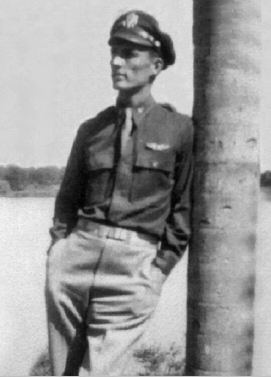 Clarence W Fightmaster was an Oklahoma born
pilot, the son of Irene and Eddie Fightmaster. Born in
1919, he had enlisted in 1940 and married in Florida in December
1943. He was an industrial engineer and an expert at industrial
equipment like boilers and pumps. The Daily Oklahoman
newspaper reported in Jun 1943 that he was being posted to
Courtland Field, Alabama for cadet pilot training. In
newspapers, he was recorded by his middle name Wallace
Fightmaster. His family recalled that Clarence suffered
lacerations to his head during the ditching.
Clarence W Fightmaster was an Oklahoma born
pilot, the son of Irene and Eddie Fightmaster. Born in
1919, he had enlisted in 1940 and married in Florida in December
1943. He was an industrial engineer and an expert at industrial
equipment like boilers and pumps. The Daily Oklahoman
newspaper reported in Jun 1943 that he was being posted to
Courtland Field, Alabama for cadet pilot training. In
newspapers, he was recorded by his middle name Wallace
Fightmaster. His family recalled that Clarence suffered
lacerations to his head during the ditching.
In a letter, his wife Lois recounted what she knew of the
landing, as told to her by Neil Gehret and George
Silverstein: "The B-17 Wally was
piloting was one of a group that had to be ferried overseas
by their crews because they were fitted with (secret) radar
that enabled them to fly at 30,000 feet—quite high in those
days. When their fuel began to run low, they
jettisoned everything—all the clothes they weren't wearing,
all their belongings---everything. They were carrying two
passengers who were not crew members. When those in
the plane spotted the ship, they realized that ditching was
their best chance to survive. As the plane splashed
down on the water, Wally went through the windscreen,
injuring his head and cutting up his hands. One of the
passengers had hysterics and had to be pulled bodily from
the craft. Gus Ranzinger, the navigator, apparently
sustained an injury that destroyed his balance. The
seas, reportedly, were 20 feet. I do not know how the
ship's crew got the plane's crew aboard, but one thing Wally
did relate was that he got his first taste of Irish whiskey
shortly thereafter. The ship had a cargo for London,
so, the survivors were informed, they could go to London and
rejoin the war effort or they could go back to Ireland and
be interned for the duration, Being patriotic,
foolish, young men, they opted for London, where they
were treated like spies because of their "irregular"
entry. Wally spent 6 weeks in hospital, Gus, longer.
When Wally finally went back on duty,he got opportunities to
go to Ireland on leave, where he bought me beautiful tweed,
and where he remembered fondly having steak with an egg on
top.
Clarence suffered
head injuries in the ditching and later was transferred to
aircraft ferrying activities according to his family.
Wally, as he was
known to family and friends, passed away in Oklahoma in
October 1980. His wife and son kindly provided the photo on
this page.
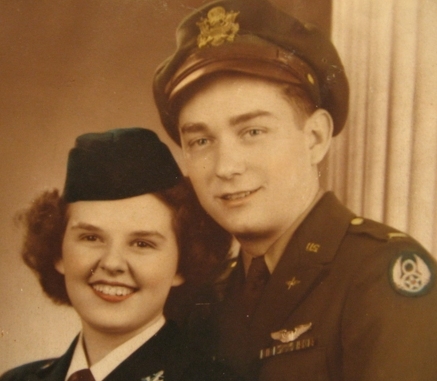 Neil K Gehret was a Pennsylvanian born
pilot. He enlisted in July 1942 in Allentown. Following his
arrival in the UK he was posted to the 91st Bomb Group but had
returned to the United States by December 26th 1944. Neil was
featured in his local Florida community newsletter in July 2014,
with a group of similar veterans reflecting on being fathers. The
article can be read here. It records for Neil, Neil
Gehret served in WWII in the Army Air Force, as a pilot on a
B-17. After the war he went back to a job as a controller for
various manufacturing companies in south Florida.
Neil K Gehret was a Pennsylvanian born
pilot. He enlisted in July 1942 in Allentown. Following his
arrival in the UK he was posted to the 91st Bomb Group but had
returned to the United States by December 26th 1944. Neil was
featured in his local Florida community newsletter in July 2014,
with a group of similar veterans reflecting on being fathers. The
article can be read here. It records for Neil, Neil
Gehret served in WWII in the Army Air Force, as a pilot on a
B-17. After the war he went back to a job as a controller for
various manufacturing companies in south Florida.
In 2008 Neil was able to pass on the following narrative via his care assistant: After completing radar bombing training for the bombadier at Langley Field, Virginia, we left England by B-17 by the northern route. Our first stop outside the U.S. was at Goose Bay, Labrador. Our departure from Goose Bay was delayed because it had snowed during the night. Our next stop was to be Iceland. As we flew towards Iceland we found all the radio equipment onboard was not operating. Without radio contact, it was not possible to land in Iceland. At our briefing before leaving Goose Bay, we were told if it was not possible to land in Iceland, our alternative landing field was Stournway, Scotland. Also, we learned that our navigator's sextant was missing, making celestial navigation impossible. Following a compass course without knowledge of wind speed or direction would cause drift from the compass course. After many hours in the air and fuel running low, we spotted a ship. As we circled the ship, the radio operator flashed in morse code to the ship requesting directions to land. The ship responded with the code letter of the day identifying them as a neutral. It became necessary to ditch the plane while we still had fuel to make a power-on landing in the water. We ditched near the ship, inflated the life rafts, and eventually we were picked up. We were told by the crew of the Irish ship that they got the coal to run the ship from England, and had to report to an English port for inspection of their cargo before they could dock in Ireland. Upon arrival in the English port we were sent for more combat flight training before our arrival at our bomb group to engage in bombing missions for which we were trained.
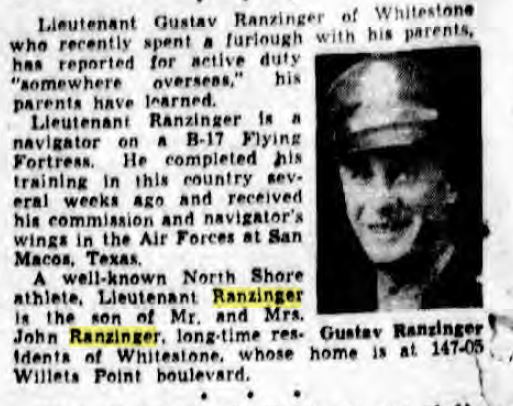
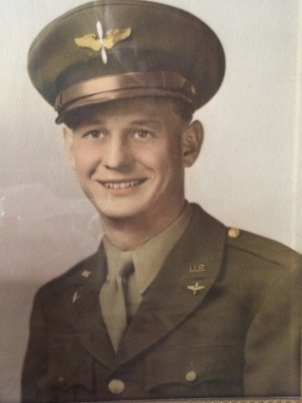 Gustav
Ranzinger was a German born immigrant born in 1918. In
1923 he arrived in New York with his mother and sister,
traveling to meet his father John who had preceded them. Growing
up in New York city, the 1940 census shows Gustav to be working
as a Bank Clerk. He was often reported upon prewar
for his local newspaper due to his involvement with local tennis
competitions. He enlisted in the Air Corps in 1942. The
small article at right was published by the XXX in XXX and goes
on to say: Lieutenant Gustav
Ranzinger of Whitestone who recently spent a furlough with
his parents has reported for active duty "somewhere
overseas" his parents have learned. Lieutenant Gustav
Ranzinger is a navigator on a B-17 Flying Fortress. He
completed his training in this country several weeks ago and
received his commission and navigator's wings in the Air
Forces at San Marcos, Texas. A well-known North Shore
athlete, Lieutenant Ranzinger is the son of Mr and Mrs John
Ranzinger, long term residents of Whitestone, whose home is
at 147-05 Willets Point boulevard." Beyond
his presence on B-17 42-97747, little more is known of Gustav's
service career as he does not appear to show up the the records
of the 91st Bomb Group. His family understand that his hearing
was damaged during the landing in the sea and this resulted in
him being removed from flying duties. His service records
indicate to them that he served with the 94th Bomb Group.
Documents kept by Gustav show him as being posted to the 482nd
Bomb Group (P) in June 1944.
Gustav
Ranzinger was a German born immigrant born in 1918. In
1923 he arrived in New York with his mother and sister,
traveling to meet his father John who had preceded them. Growing
up in New York city, the 1940 census shows Gustav to be working
as a Bank Clerk. He was often reported upon prewar
for his local newspaper due to his involvement with local tennis
competitions. He enlisted in the Air Corps in 1942. The
small article at right was published by the XXX in XXX and goes
on to say: Lieutenant Gustav
Ranzinger of Whitestone who recently spent a furlough with
his parents has reported for active duty "somewhere
overseas" his parents have learned. Lieutenant Gustav
Ranzinger is a navigator on a B-17 Flying Fortress. He
completed his training in this country several weeks ago and
received his commission and navigator's wings in the Air
Forces at San Marcos, Texas. A well-known North Shore
athlete, Lieutenant Ranzinger is the son of Mr and Mrs John
Ranzinger, long term residents of Whitestone, whose home is
at 147-05 Willets Point boulevard." Beyond
his presence on B-17 42-97747, little more is known of Gustav's
service career as he does not appear to show up the the records
of the 91st Bomb Group. His family understand that his hearing
was damaged during the landing in the sea and this resulted in
him being removed from flying duties. His service records
indicate to them that he served with the 94th Bomb Group.
Documents kept by Gustav show him as being posted to the 482nd
Bomb Group (P) in June 1944.
He was able to retain copies of the original movement orders
that the crew of 42-97747 received during their departure for
Europe.
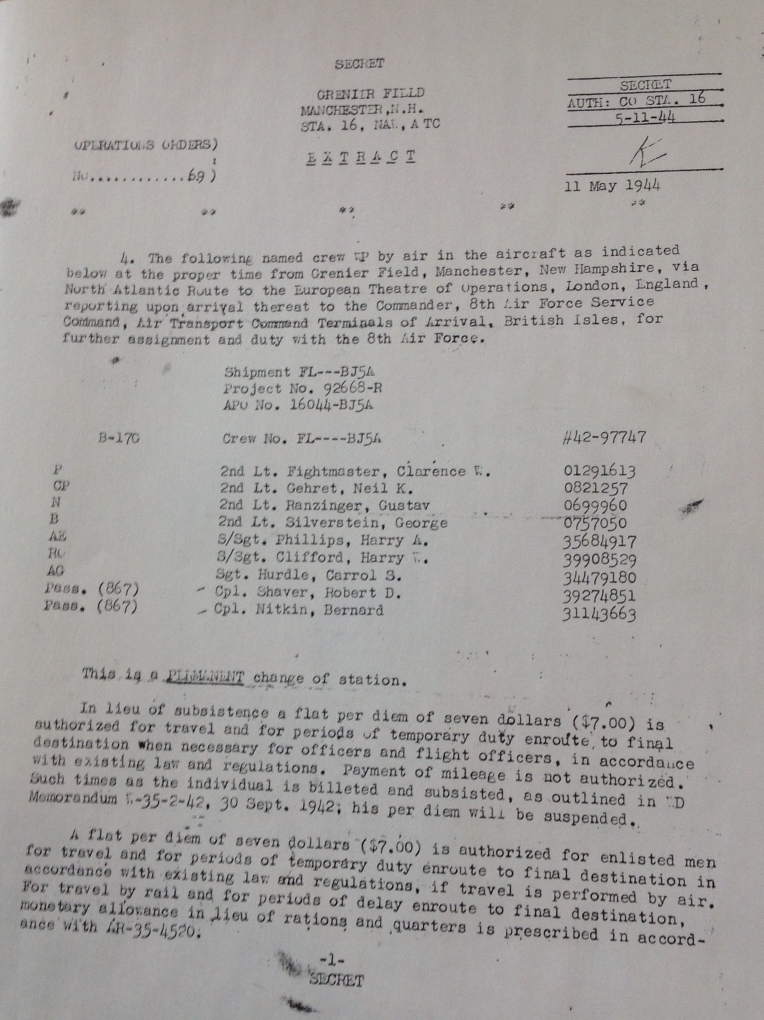
A further movement order supplement repeated the information
above but with all MOS.
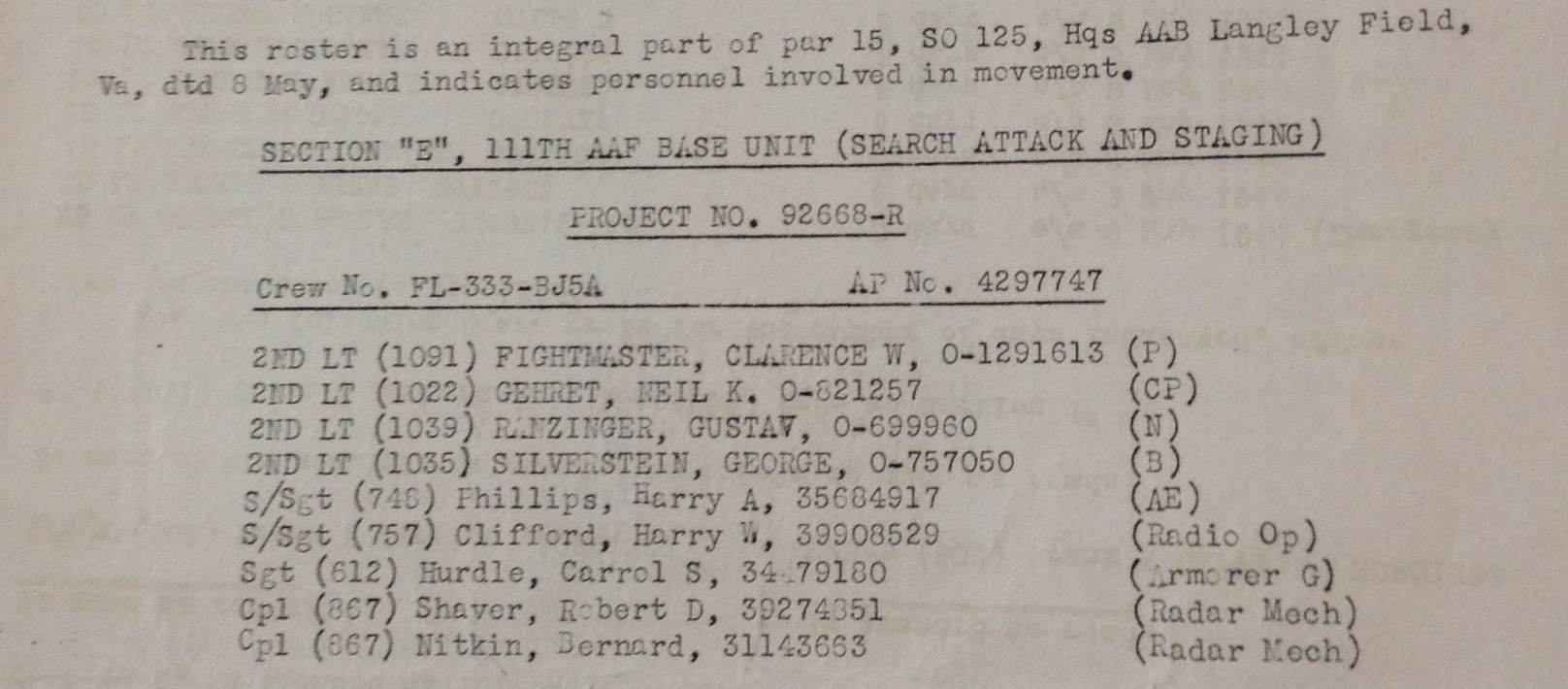
In these documents Gustav is making a loss claim report for his lost equipment and belongings. The documentation retained by Gustav includes his claim form for his belongings and equipment that were lost with the ditching of 41-97747. This document is one of the only contemporary documents that mentions the name of the ship.
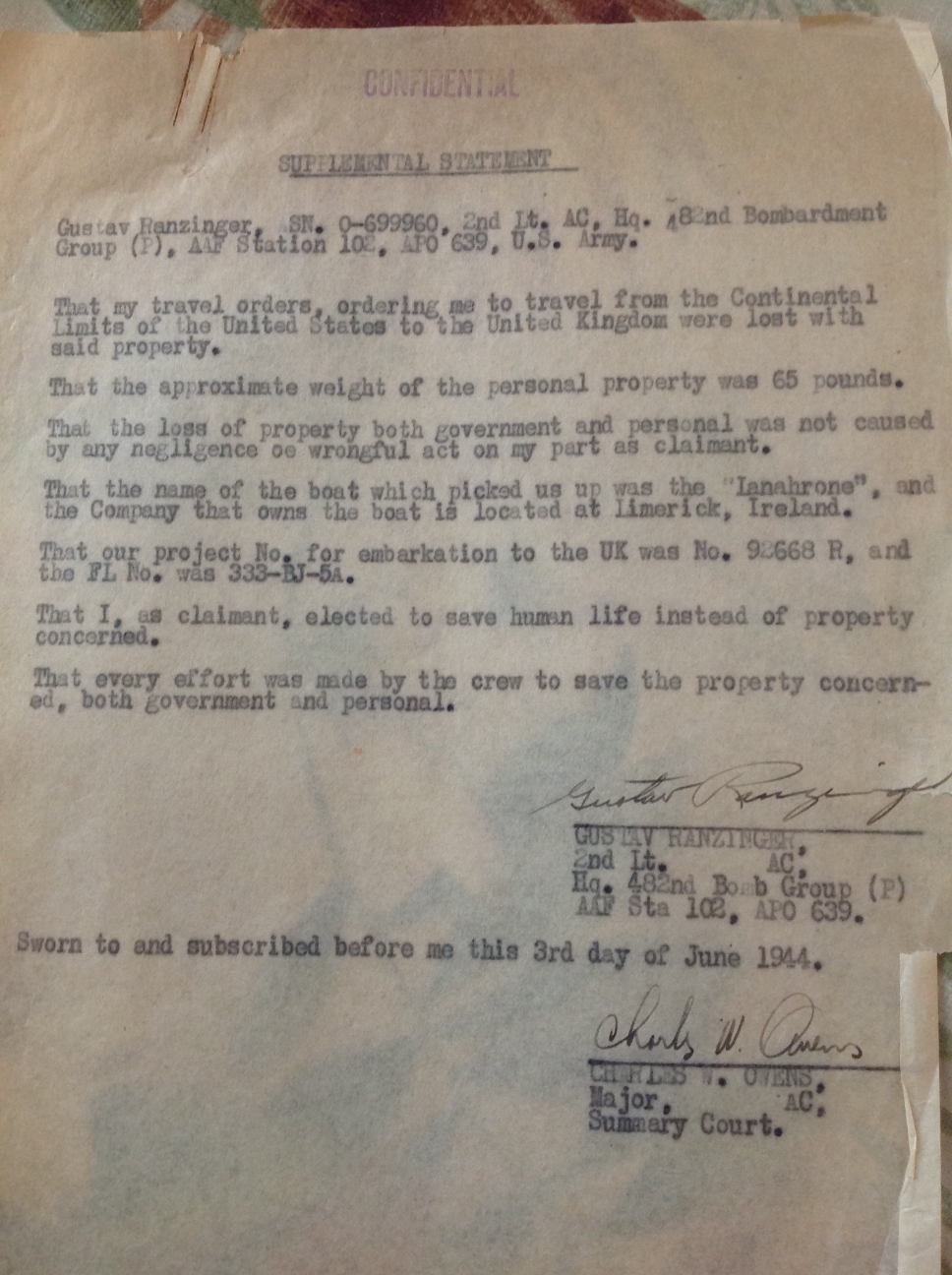
His rescue at sea earned him the ability to request a Goldfish
club membership, a club for those who had been saved by
emergency flotation equipment fitted to aircraft.

His daughter wrote of her father: "My
Dad never spoke of it. He was angry that they removed
him from flying due to his injury from the ditching.
He fought for years to prove...he finally did...that his
hearing loss was service connected. It was Meniers
syndrome from the shock of the crash. They tried to
say it was nerves when it happened. The only stories I
remember hearing was when he was in the hospital. He
spoke of hearing the bombers struggling to take off and some
not making it with the heavy bomb load. Also, one of
his last assignments was stateside discharging GIs.
Apparently he signed Ronald Reagans discharge papers...so we
were told...not proven.
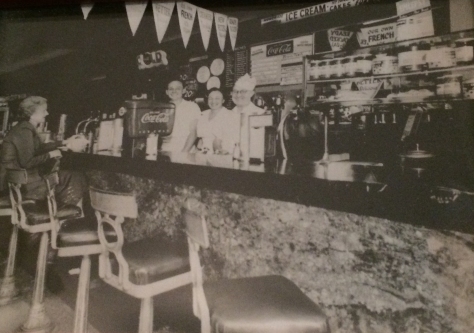 After the war my Dad went into business with
his father and started Broadway Confectionery..an ice cream
parlor in Flushing Queens. I included a picture..from
left to right my Dad, his sis and Father. It was better
known as the Slab...from the marble slab counters.
That picture hangs on the wall still today. It is a
coffee shop and we recently went there when we visited my
Dad and family in Flushing Cemetery. He had the store
until about 1959.
After the war my Dad went into business with
his father and started Broadway Confectionery..an ice cream
parlor in Flushing Queens. I included a picture..from
left to right my Dad, his sis and Father. It was better
known as the Slab...from the marble slab counters.
That picture hangs on the wall still today. It is a
coffee shop and we recently went there when we visited my
Dad and family in Flushing Cemetery. He had the store
until about 1959.
He bounced around a few years before becoming an
insurance agent with Prudential. He retired in the late
eighties after many years with them. He then battled
prostate cancer and passed away April 4, 1990. He and my Mom
married in 1946."
He passed away in New York in March 1990.
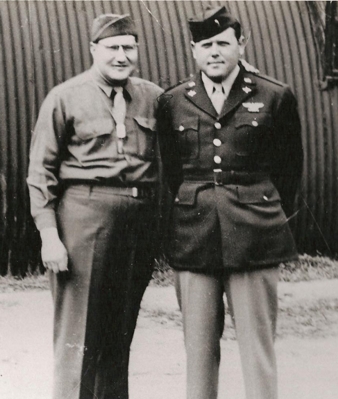 George
Silverstein was a resident of Brooklyn, New York, born in
1915, the son of Sam and Fannie Silverstein. He along with two
other brothers Milton and Martin, served during the war. George
was awarded the Air Medal and the Distinguished Flying Cross
(DFC) during his service. He flew as bombardier under the
command of a number of pilots up to at least the end of November
1944 with the 401st Squadron.
George
Silverstein was a resident of Brooklyn, New York, born in
1915, the son of Sam and Fannie Silverstein. He along with two
other brothers Milton and Martin, served during the war. George
was awarded the Air Medal and the Distinguished Flying Cross
(DFC) during his service. He flew as bombardier under the
command of a number of pilots up to at least the end of November
1944 with the 401st Squadron.
George is shown on the right of the photo at left, with his
brother Milton on the left. Milton served in the Signal
Corps during the war.
He passed away in 1985 in the Bronx, New York.
The Brooklyn Daily Eagle of 22 Oct 1943 carried a photo of
George on the occasion of his graduation as a bombardier.
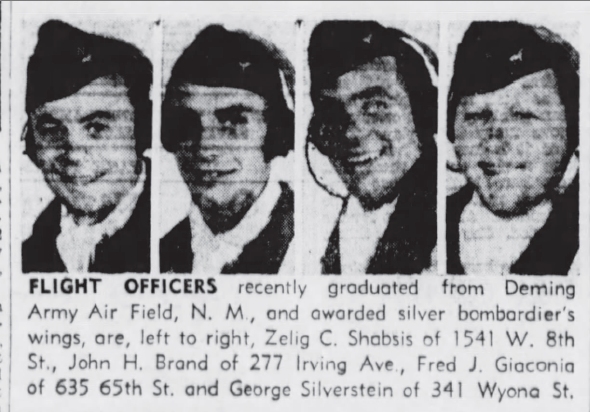
Harry W Clifford was born in 1923 in Grand Junction,
Colorado to Harry and Eva Clifford, moving later with his family
to live in Weber County, Utah. His high school education
was in Westminster College in Salt Lake City. He enlisted
at the start of February 1943 and served through until release
from the services in November 1945. The Salt Lake Tribune
of Sep 5, 1943 records him as having graduated from radio school
at Scott Field, Illinois. At that time his father and step
mother, Harry and Channie Clifford lived at 704 1/2 West 2nd
Street in the city. Harry's brother Raymond L Clifford also
served in England with the Army Air Forces, but the exact
details have yet to be determined. He was awarded the DFC
as well as the Air Medal with three Oak Leaf Clusters during his
time with the 91st Bomb Group.
After the war he became a special education teacher in
Wilmington, Delaware and his obituaries recorded his having
devoted many hours and money fighting for the rights of children
with Special Needs.
His great love however was dancing. He was a ballroom
dancer and ran a dance studio in New York and later the
Wilmington and Newark areas. He was said to have learned
to dance while serving in England. He was often mentioned
and interviewed in Delaware newspapers about dancing. And
he was often recorded in those interviews as having served in
the 401st Squadron, 91st Bomb Group as a radioman. The
Morning News, from Wilmington, Delaware ran a long article about
Harry and his dancing career on the 3rd of February 1983.
The article included: His love
affair with dance began while he served as a radio operator
with the Eighth Air Force in England during World War II.
While checking out the night life in London, he had a rude
awakening. "None of the American GIs knew how to dance or
knew only how to jitterbug. The English girls and other
Europeans were fantastic dancers. We didn't how to dance
with the girls we met." Clifford began taking dance lessons
from English instructors.
Soon he was teaching other GIs.
He never married and had no children. Harry passed away
in December 1987 in Salt Lake City from cancer, and was survived
by his step mother and four sisters.
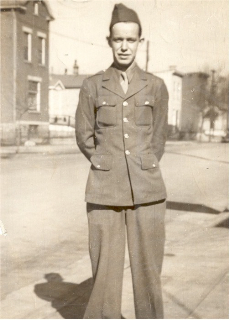
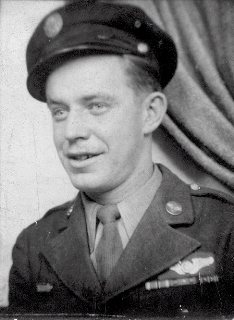
Harry A Phillips was born in 1923 in Campbell,
Kentucky. Harry passed away in September 1984 and had told his
family little about his wartime service. They did know that he
carried out 31 missions with the 91st Bomb Group and he had told
family members that he had been shot down over the Irish sea and
had to be rescued. As the family understood it, he was given a
long recovery period in Colorado after this, however the facts
are unclear. Harry was the airplane mechanic - gunner
within the crew, evidenced by his Military Occupation Specialty
(MOS) of 748.
Harry passed away in Kentucky in September 1984 and is buried
there in Campbell County.
His family had the following two photos of Harry with wartime
comrades, and it appears it shows the enlisted men group that
stayed together throughout 1944.
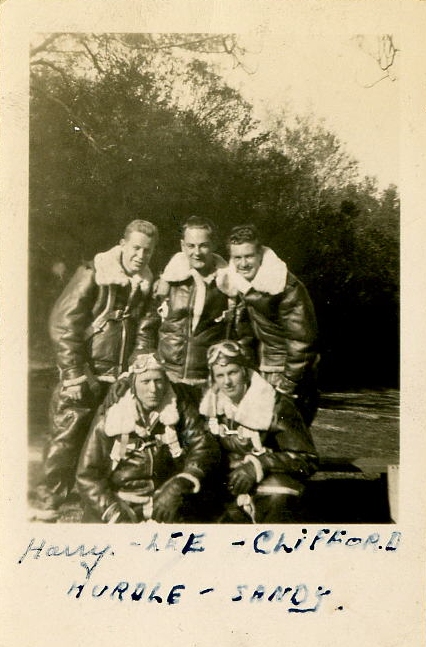
The names here , listed from left top are: "Harry,
Lee, Clifford, Hurdle and Sandy" Comparing the faces from
photos it is assumed that the men are as follows:
Harry is Harry A Phillips;
Lee: its not clear who this might have been based on the names
presented in the 401st Bomb Group diaries.
Clifford: Harry W Clifford;
Hurdle: Carroll S Hurdle
Sandy: It is expected that this was Robert C Sandblom who served
with Hurdle, Clifford and Phillips during combat based in
the UK.
They together served with a numbers of pilots including
2Lt. Charles K. Neiswender O-803255, Clarence Fightmaster, and
Jack Oates.
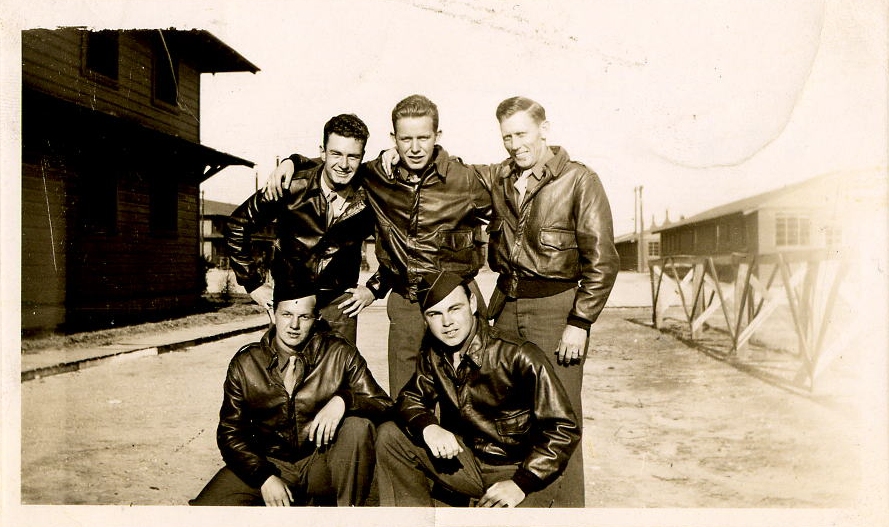
This additional photo shows, it seems, the same five
individuals, albeit this time without names recorded. They
appear to be:
Rear row, left to right: Harry W Clifford, Harry A
Phillips, Carroll S Hurdle
Front row, left to right: Possibly Robert C Sandbolm and perhaps
the in the individual named 'Lee" in the other photo.
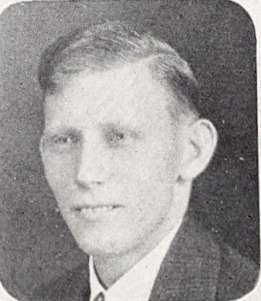 Carrol S
Hurdle came from Marshall County, Missisippi. He studied
at Mississippi State University and was working before the war
in a sales roles. He died in November 1983 in his native
Marshall County. The American
Air Museum website also has a page dedicated to Sgt.
Hurdle however it too mentions that he spoke little about his
wartime experiences. Carroll Simpson (“Simpson”) Hurdle, oldest
child of Donny Oscar Hurdle and Cornelia Bell (Bull) Hurdle, was
born 7 October 1908 (Mississippi) and died 17 November 1983,
married Margaret Louise (“Louise”) Winter who was born 19 April
1915 (Holcomb, MS) and died 23 February 2008. Simpson and Louise
are buried in Slayden Cemetery (Marshall County, MS). They had
no children but are fondly remembered by relatives.
Carrol S
Hurdle came from Marshall County, Missisippi. He studied
at Mississippi State University and was working before the war
in a sales roles. He died in November 1983 in his native
Marshall County. The American
Air Museum website also has a page dedicated to Sgt.
Hurdle however it too mentions that he spoke little about his
wartime experiences. Carroll Simpson (“Simpson”) Hurdle, oldest
child of Donny Oscar Hurdle and Cornelia Bell (Bull) Hurdle, was
born 7 October 1908 (Mississippi) and died 17 November 1983,
married Margaret Louise (“Louise”) Winter who was born 19 April
1915 (Holcomb, MS) and died 23 February 2008. Simpson and Louise
are buried in Slayden Cemetery (Marshall County, MS). They had
no children but are fondly remembered by relatives.
Carrol carried the MOS 612 which classified him as an Armourer
Gunner.
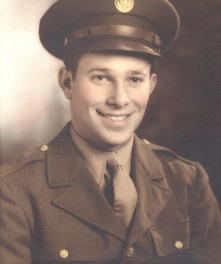 Bernard
Nitkin came from New Haven, Connecticut. He remained a
resident there until his death in 2011.
Bernard
Nitkin came from New Haven, Connecticut. He remained a
resident there until his death in 2011.
Bernard's life in public service was recorded in online Obituaries including this one at Legacy.com
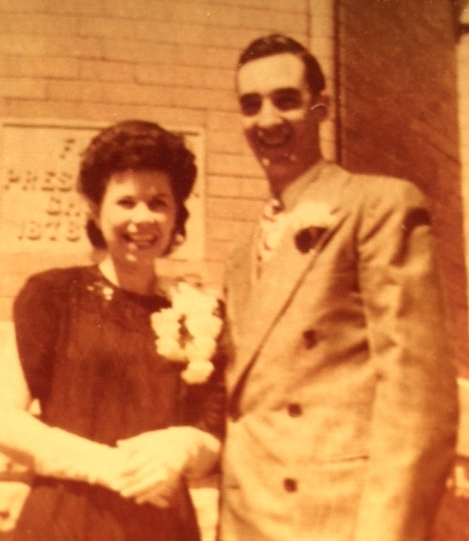 Robert D
Shaver was another radar technician on B-17 42-97747. His
enlistment number unfortunately falls within a batch of numbers
not saved in historical US Army enlistment databases, however,
his name and serial were found on a shipping manifest of the
Queen Mary, dated July 11th, 1945 arriving in New York. At that
time he is listed as sailing with the 446th Bomb Group, but it
may have been a posting for the purposes of shipment. His
enlistment number starting with 3927xxxx suggested that he may
have come from California. It turns out he was Robert Dale
Shaver, from Manhatten, Kansas, who was working for the Douglas
Aircraft Corporation in Long Beach, California at the time of
his draft registration at the end of June 1942. Robert was
born in 1922 to Claude and Bertha Shaver. The local Kansas
newspapers in July 1945 reported that Sgt Robert or Bob
Shaver had returned from England.
Robert D
Shaver was another radar technician on B-17 42-97747. His
enlistment number unfortunately falls within a batch of numbers
not saved in historical US Army enlistment databases, however,
his name and serial were found on a shipping manifest of the
Queen Mary, dated July 11th, 1945 arriving in New York. At that
time he is listed as sailing with the 446th Bomb Group, but it
may have been a posting for the purposes of shipment. His
enlistment number starting with 3927xxxx suggested that he may
have come from California. It turns out he was Robert Dale
Shaver, from Manhatten, Kansas, who was working for the Douglas
Aircraft Corporation in Long Beach, California at the time of
his draft registration at the end of June 1942. Robert was
born in 1922 to Claude and Bertha Shaver. The local Kansas
newspapers in July 1945 reported that Sgt Robert or Bob
Shaver had returned from England.
Bob and his son very kindly collected by memories of the
incident and his wartime adventures. These are presented
below due to their extensive length. His posting to an
airfield near Ipswich ties in with the 446th Bomb Group being
based at
The aircraft, a Lockheed Vega built B-17G-30-VE, was one of the
famous wartime Flying Fortress bombers. It had been delivered
only in February 1944 and was enroute to Europe. The
presence on board of two radar technician passengers hints
towards the fact the aircraft was equiped with the then top
secret H2X bombing radar. This was also known as the
Mickey set or as the BTO, Bombing through Overcast unit.
Compiled by Dennis Burke, 2019, Dublin and Sligo. If
you have information on any of the people listed above, please
do contact me at dp_burke@yahoo.com
The testimony of Robert D
Shaver, prepared in April 2019.
WW2 Experiences - Robert Dale Shaver (39 274
851), 8th Air Force radar technician on a B-17 (42-97747)
that ran out of gas and ditched in the Atlantic at 49 Deg
46 Min N x 13 Deg 1 Min W off the coast of Ireland in May,
1944 - my story.
As a corporal just out of radar school in
Florida, the story of my trip to England to deliver a
specially outfitted B-17 Flying Fortress with the Air
Force's most top secret radar precision bomb site that I
now know they were trying to get to the front by D-Day is
something I have never forgotten. With the help of my son,
Joel, I will try to relate the story as I remember it, as
well as some general recollections from the war. In early
2019, Irish researcher Dennis Burke who had been
collecting accounts of that flight for
www.ww2irishaviation.com contacted me with details gleaned
from others and I am now able to fill in gaps in the
larger story I have wondered about ever since the events
transpired.
My name is Robert D. Shaver, a Kansan from
Wabaunsee County near Topeka. A guy came through town
looking for aircraft workers in California to support the
war. To get there, I hired on to drive a brand new Dodge
for an elderly couple that rode in the back seat. I was
working for Douglas in California building B-17s when I
joined the Army Air Corp at Ft. MacArthur in January 1943
at age 21. I took a troop train all the way across the
country to basic training at St. Petersburgh, Florida,
followed by Radio School at Truax Field in Wisconsin, and
then Radar Technician school around Boca Raton back in
Florida as part of the 8th Air Force. I reported to
Langley Field, Virginia where I got what they call a
delay-in-route so I could go back home to Tonganoxie on a
30 day leave then report back to Langley. Bernard Nitkin,
another radar technician, and I were assigned to support
the game-changing radar gear that would allow for
precision bombing through clouds and bad weather or in
total darkness in a specially modified B-17. I knew of
Bernard at radar school, but he was in a different class
and we didn't really meet until being assigned to the same
plane. The 9-person flight crew assigned to ferry the
plane over had flown together before, so Bernard and I
were there more as "passengers." Since the radar antenna
was substituted into the waist gunner bay, Bernard and I
took the place of two of the gunners who were to travel by
ship and we were being piloted by Lt. Clarence Fightmaster
and his men to England to deliver the aircraft in a hurry.
Before leaving, they gave us instructions on what to do if
ditching the airplane was required. There was the pilot
and co-pilot, bombardier and flight engineer, all on the
flight deck. Then five of us; the tail gunner, the radio
operator, the navigator, Bernard and I were in the radio
room.
We took off from Langley Field early one
morning headed for Goose Bay, Labrador. We got up to Maine
and lost a super-charger on one of the engines. We landed
and called back to Langley to get parts. That threw us
behind and we landed in Goose Bay about dark and just
ahead of a storm. We were socked in there for seems like
several days.
The radar we had on the plane was the most
secret thing in the Air Force. It could do precision
bombing through clouds or at night where normally you had
to be able to see the target visually. The radar antenna
gear could be cranked down in place where the waist
gunners normally sat, then there was like a TV screen
where we could see the ground to bomb. So we had to stand
24 hour guard on that plane the whole time we were there.
We weren't dressed for that and it was the most miserable
thing I've ever seen. There were four officers and five
enlisted men and the enlisted men had to take turns on
four hour shifts guarding that plane. I got acquainted
with a guy there at Goose Bay, I don't remember all the
details, but somehow I beat him out of a brand new
sheepskin flying suit. It fit me good and was the warmest
thing we had. We took turns wearing the suit on guard duty
to stand the cold. I stood the last watch so was wearing
the flight suit when we took off.
In a briefing we were told to take off and
climb to 11,000 feet where we were to break through the
clouds and then set a heading to Iceland. We ended up
having to go higher to get above the clouds and that threw
us way off. We called back to Goose Bay to request
permission to return but were told they were completely
socked in tight. Iceland was still open so we were to head
there. The pilot called back to Chris the navigator (we
called him Chris, not Gustav) that he needed a heading for
Iceland. The navigator had his sextant in a nice wooden
box he had to keep with him all the time. It had snowed
the night before leaving Goose Bay, and when we were
loading the plane, the box was dropped. Chris looked at it
when it happened and thought it was okay. He gave the
pilot a heading, but after a while the pilot asked him to
re-check the heading because something didn't seem right.
Then Chris checked and started cussing. The sextant was
damaged and no good to use. There we were not knowing
where we were and no navigation. We radioed someone, I
think in Greenland, and they said to go on to Iceland. We
asked how we were supposed to do that without navigation,
but headed on east. We did make brief radio contact with
Iceland but about that time the radio went out, and then
we didn't have any navigation or radio, and all we could
do is fly. The only thing we knew is that we were
ultimately headed to England. We were to be told our next
stop from Iceland, so all we knew was to fly east but we
didn't want to go too far to Finland where the Nazi's
would shoot us down. We threw everything out we could to
lighten the plane, and the pilot leaned it out to just
where we could stay going. We started flying south
(towards England, we hoped) but shortly after that the
pilot announced we were about out of gas. We talked about
whether we wanted to bail out or ride it down together,
and decided to stay together. We'd have been strung out
across a section of the North Atlantic and been almost
impossible to find if we had bailed out. They had told us
the temperature of the water was 26 degrees, and the
longest one could survive in that water was about 25
minutes.
We started doing our ditching procedure. I had
that heavy flying suit on, which was lucky. The first
thing we were to do is jettison the machine gun but we
couldn't get the mounting loose, so we sort of tied it off
to the side. We had assignments for what we were to do
before and after the plane hit the water. The five of us
in the radio room were to sit on the floor with our backs
to the forward bulkhead with the navigator and radio
operator to the front, then with their backs to them was
the tail gunner and Bernard with me in front of them all
so I was to be the first one up after we ditched. I was
the tallest one of the bunch and I was to stand up and
there was a lever right there to release the life rafts.
They were attached up high on either side. I was to go to
the left wing and hold the raft against the trailing edge
and the tail gunner was to go to the right. We hit the
water and I got up and the machine gun came loose and hit
me in the side of the head and knocked me down. We skipped
on the water and when we came back down there was water
coming in and I tried to get back up. The tail gunner used
me as a ladder to get out of there, but when I got to the
left wing the raft was clear back by the tail. I jumped
into the water to go back to get the raft but that heavy
flight suit started pulling me down. I had a Mae West on
and I pulled the chain and inflated it. That brought me
back up and I got the raft back to the trailing edge of
the wing and there stood the tail gunner. I said "What are
you doing here?" He said "Mine didn't come out!" So all of
us tried to get in the one life raft, but it wasn't big
enough. Bernard and I, I guess because we were
"passengers" and not part of the core crew, were off the
side in the water but Bernard started wailing and they
pulled him into the raft to shut him up.
There were supposed to be two paddles and some
rations and water in each raft but there was nothing. The
only thing was a patch kit in case we got machine gunned.
We were trying to get away from the airplane paddling with
our hands because we didn't know if the plane going down
would have a suction that could pull us under. There was a
cord attached to the plane keeping us from getting past
the wing tip. I tried to break the cord but couldn't.
Finally I wrapped the cord around my arms to get more
leverage. I said to Chris, "Grab my arms and break it!" He
said, "I’ll break your arms!" "Break it!" I said, and we
started snapping it and it finally broke. We had big
oxygen bottles in the plane tied together to some orange
plywood boards that all broke loose when we ditched.
I grabbed a board to be used as a paddle. We then
started counting noses and the bombardier and the flight
engineer were missing. We tried to decide whether to go
back to the airplane. We started hollering and looking for
them. The next thing we knew the front section came loose
at the main bulkhead and dropped down. Shortly after that
the right wing broke off and the left wing came up and
slipped out of sight. We thought they were gone. I
was still in the water and felt myself sort of slipping
away. Chris was right above me and was holding on to me. I
finally wrapped my arm through the rope around the top of
the raft and sort of hung there tied to the raft and
passed out.
It was about three and a half hours later when
I came to on the deck of this ship. It was a pretty small
ship, it seemed. I was stripped with one man rubbing each
leg and arm and a couple rubbing my body trying to warm me
up and rub life back into me. Finally I came to and said
"What the hell are you guys doing!" In a little bit they
wrapped me in blankets and took me into the cabin. It was
an Irish ship and the captain came in with two or three
fifths of whiskey under each arm. He said, "The good stuff
is all gone" as he poured out a big glass of whiskey for
each of us. We hadn't eaten for I don't know how many
hours. I drank it and it started warming me up. They came
around with another glass and I started getting warmer and
the room started spinning and I passed out. And, you know,
I came out of that without so much as a cold.
I got to looking around and there was the
bombardier and flight engineer. They were supposed to go
to the right wing then had seen there were too many people
on the left side so they dug the life raft out on the
right and took off. The ship found them first and they
told them about us and they started the search. I don't
remember knowing about it at the time, but stories from
those on the flight deck say the pilot saw the ship and
signaled to it before hitting the water. I am sure now
that cockpit decision was what allowed us all to survive.
The bombardier and flight engineer would have known the
ship was in the vicinity and must have headed right for
it. The pilot and co-pilot in our boat would have also
known, but I don't remember hearing about a ship being
near at the time.
I remember asking the captain how far it was
to land. "Two miles - straight down!" he said.
I don't think I really realized it at the
time, but we couldn't go to Ireland because they were
neutral and we could have been interned for the duration
if we set foot on their land. We just wanted to get to
England where we were headed, and the Irish ship was
already headed for England, so we sailed on in radio
silence. The ship was running short on food, and I
remember us having ham and eggs for just about every meal.
The German U-boats were supposed to be around
and the waters along Ireland and England had been mined to
keep them out. The ship was carrying a load of wine from
Portugal. To get around the U-boats, they had to make a
big loop and that's why they were up there where we came
down. The captain, using a map, had to make it through the
mine field and our crew spent time on the front of the
ship looking for mines, trying to get to the clear passage
nearer land. You could see them in the water and we even
scraped some. You have to hit them pretty good for them to
go off. We went along the west coast of Ireland and were
on the ship for I think several days. The ship's crew
treated us well. We would talk with them but we mostly
didn't have much to do.
They finally broke radio silence and called
the British because they didn't know if we might be German
spies trying to get into the country. We docked in
Fishguard, Wales and the British met us. They had us for a
week or two, questioning us separately time after time. We
finally convinced them who we were. Then they turned us
over to American intelligence and it didn't take them too
long to figure out who we were. We had lost everything but
the clothes we were wearing and our dog tags on the
airplane. I still had that flying suit and it had got the
side all torn up coming out of the airplane and we were
all a mangy looking bunch, out of uniform and getting
stopped by the MPs several times on the way to a base near
London. Since Bernard and I were not really part of the
flight crew, they put us into a little Quonset hut on the
base. They were trying to figure out what to do with us
with someone watching us all the time and all we could do
was go to the mess hall and come back. That went on for
several days. I finally got permission to talk to the
boss-man, he was a captain. I explained everything to him
and convinced him. He told me to go get Bernard and we
were supposed to report to somewhere else on the base.
They had us fill out our own service records to the best
of our recollections and you know, that thing followed me
back to the states and that’s still the only record they
ever had on me as far as I know.
We were first at Alconbury (482nd Bomb Group),
a base in the town Lord Haw-Haw (a.k.a. William Joyce -
American born but raised in Ireland) was from or well
known in. He was a traitor that went over to the German
side and would be on the radio like Axis Sally. He would
taunt us and say "You Yanks can't be on time; the clock in
the officers mess is 4 minutes slow" and we checked and it
was so he had eyes in the base. All the radar bomb site
planes we had were at that base and Lord Haw-Haw would
talk about how they were going to get them and us. You
could go into a pub in the town and if you mentioned his
name, they'd show they really hated him. We were there on
D-Day with the planes going over by the hundreds.
Since the Germans knew we had all those planes
at the same base, they decided to split them up and I
moved to a base at Ipswich with two of them and that was
right in Buzz Bomb Alley. Every evening the buzz bombs
would start and there were anti-aircraft guns blazing.
They told us they were manned by women. They would get a
lot of them but a lot of them got through. We'd see the
tracer rounds going and then they'd bring one down. We had
some fall in the vicinity but nothing right in the base.
I'm not sure the radar bomb sites were ever used much. We
Americans flew missions during the day, then the British
took over at night when it was safer from German fighters.
I don't remember many cloudy missions where the radar
bombing was needed, but two radar planes went out with
each bomb group, generally. I was ground crew for the
planes to check them out between missions. I was the only
one with a driver's license so I had to position all the
power units under the planes to do our system checks.
There wasn't all that much to do once I got to Ipswich
since there were only two planes to support.
I got a real nice bicycle so I could get
around away from the base. It was a deluxe model that
really turned the heads of the local boys. When it was
time to go back to the U.S. on the Queen Mary as war wound
down, I rode that bike to the dock. I knew I couldn't take
it with me, so there was this English boy that was really
admiring it. I said "How would you like to have this
bike?" "Gee, mister, my mom would whip me if I came home
with this thinking I stole it!" So I wrote him a little
note explaining the situation and put my name there. He
was so tickled with such a gift, especially after all the
sacrifice that was made by everyone during the war. I've
often wondered about how that boy with that bike made out.
On the way across the Atlantic, the ship got
hit by a big storm. All the gyros went out and the ship
was really rolling around. Almost everyone but me and a
friend got sick. When I got back to the States and was
getting off the Queen Mary, there were USO tents all along
the dock. Most of the guys were going over to get a belly
full of booze, but I grew up on a dairy farm and I had
really missed good non-powdered milk over in England. I
went to a tent with milk and drank it until I was about
sick.
After a 30 day leave, I reported to Clovis,
New Mexico and started training on a B-29 system for
Pacific duty, but the war ended before I got overseas
again. I was honorably discharged as a Sargent from Lowrey
Field in Colorado in October, 1945.
I took the train back home but my duffel bag
got lost. I went to the train depot in Tonganoxie about
every day "looking for it" but I was more wanting to see
Pattye in the office. A lot of jobs back then were being
filled by women since so many men had been away in the
service. I finally got her to go out with me and we
eventually got engaged. We got married and have been so
for the last 72 years, living in Wichita where we raised
two boys and I retired from Boeing after 32 years.
I am trying to find a picture of me in
uniform, but any that I had were left at my dad and
stepmother's house and have disappeared. My wedding
picture is attached and that is about as old a photo as I
have at this time. I am still trying to see if a photo can
be found in a WW2 museum or archive.
My son has pointed out that my account
differs from the official story in that I recall us having
some radio contact after Goose Bay and in us having a
sextant but it was ruined. It was a long time ago, so
recollections can be tricky. I only offer this account as
my side as I remember it, and hope it serves to illuminate
history in some way. These memories seem very clear to me
and I even still have nightmares about that plane trip and
my time in the water.
ww2irishaviation.com is kindly hosted by Kinsalenets.com ![]()
